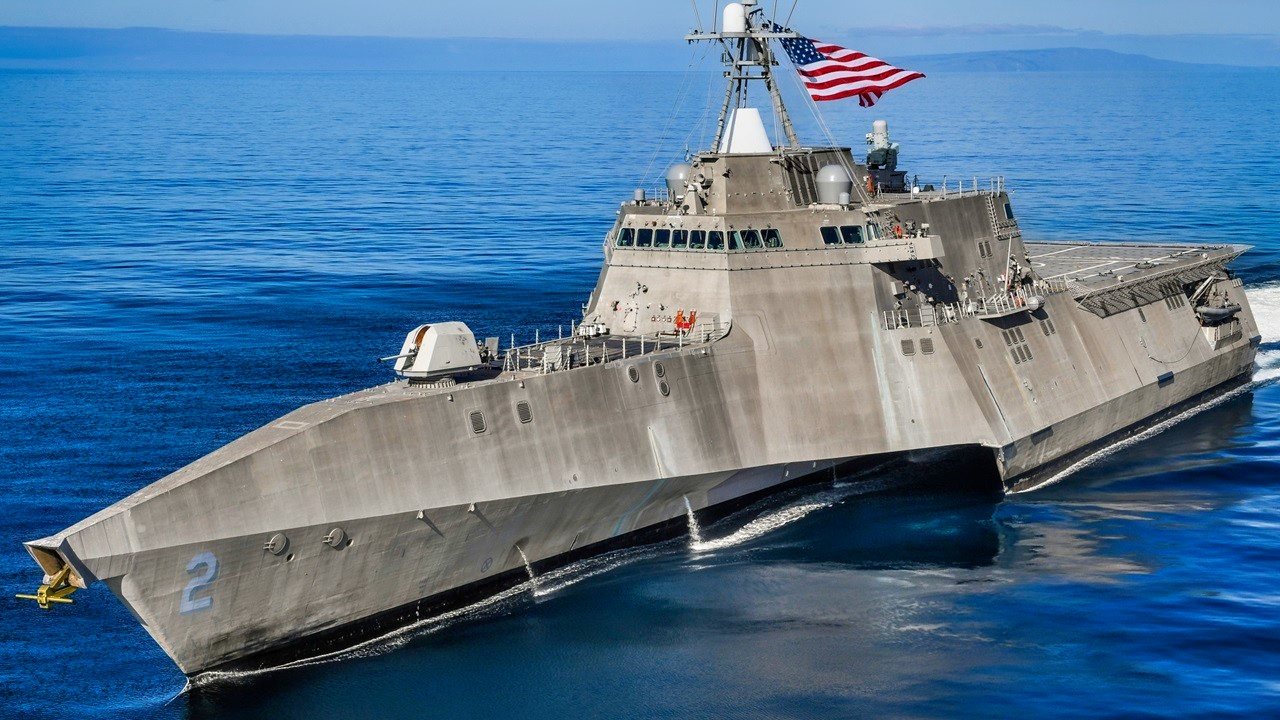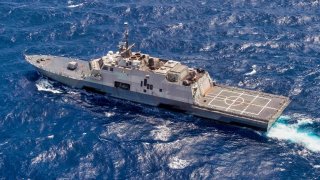How the U.S. Navy's Littoral Combat Ship Could Make a Big Comeback
Arguably one of the prime examples of government waste in recent history, the U.S. Navy’s fleet of Littoral Combat Ships (LCS) have been plagued by inefficiency, design flaws and early scrapings.
Littoral Combat Ship – On the Comeback Trail? Arguably one of the prime examples of government waste in recent history, the U.S. Navy’s fleet of Littoral Combat Ships (LCS) have been plagued by inefficiency, design flaws and early scrapings.
When the Freedom and Independence-classes were first conceptualized, these smaller surface vessels were intended to lead the Navy’s operations near shore as “agile, stealthy, surface combatant capable ships,” capable of going up against America’s naval near-peers. However, this dream was short-lived following their introduction to service.
Several of these ships have been relegated to retirement far earlier than their service lives intended.
Earlier this month, U.S. Secretary of State Antony Blinken revealed that some of the Navy’s older LCS could be saved from scrapping. Blinken floated the idea of providing several of the small vessels to Greece, which is eager to improve its own naval capabilities in light of escalating threats from Turkey.
The Hellenic Navy currently sails four La Combattante III-class corvettes and four Meko-200HN-class frigates procured in the late 1970’s and early 1990’s respectively. The addition of the LCS ships may elevate Greece’s sea-based operations.
Outlining the Littoral Combat Ship Capabilities:
Both the Freedom and Independence-class ships possess the capabilities of small assault transport ships, including flight decks. Two SH-60 or MH-60 Seahawk helicopters and smaller boats can be stored on the ships. In terms of armaments, the LCS are equipped with MK 110 57mm guns and RIM-116 Rolling Airframe Missiles.
Additionally, the LCS features unmanned air, underwater and surface vehicles including the Spartan Scout, AN/WLD-1 RMS Remote Minehunting System and MQ-8B Fire Scouts.
The Freedom-class ships are designed by Lockheed Martin and constructed by Marinette Marine. This smaller-sized variant features a semi-planning monohull while the larger Independence-class LCS utilizes a slender stabilized mono-hull capable of launching helicopters.
Initially, the ships were designed to sport reconfigurable payloads called mission modules, which were meant to be able to be changed out quickly. However, Congress cut the funding for these modules, leaving the Navy with a fleet of small ships that were really only able to conduct anti-drug operations with the Coast Guard.
A recent report released by the Office of the U.S. Director, Operational Test & Evaluation stated that the survivability of the LCS was “challenged in a contested environment against selected kinetic threat types,” while survivability for missions in cyber-contested environments was “currently unknown.”

To make matters worse, the LCS ships are also suffering with transmission issues and structural defects that have resulted in large hull cracks. The LCS ships were designed to be very fast, however, these issues have limited the ships’ overall speed.
How the Littoral Combat Ship Could Still Be Used...Just Not in the U.S. Navy
While early retirement and scrapping appear to be the only end path for the LCS ships, selling older models to Greece or other allies may lessen the financial blow the classes have caused.

As expressed by Rep. Elaine Luria (D-VA) in 2022, "The Navy owes a public apology to American taxpayers for wasting tens of billions of dollars on ships they now say serve no purpose.”
About the Author: Maya Carlin
Maya Carlin, National Security Writer with The National Interest, is an analyst with the Center for Security Policy and a former Anna Sobol Levy Fellow at IDC Herzliya in Israel. She has by-lines in many publications, including The National Interest, Jerusalem Post, and Times of Israel. You can follow her on Twitter: @MayaCarlin.
Image Credit: Creative Commons.


